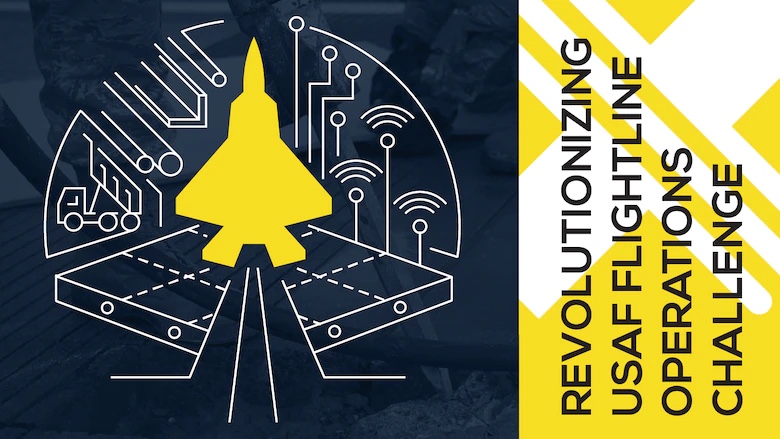
TYNDALL AIR FORCE BASE, Fla. (AFNS) —
Innovators and thought leaders from industry, academia and the federal government gathered at the AFWERX Innovation Hub in Las Vegas, Nevada, late last month to review technologies that will be a part of the Revolutionizing Flightline Operations AFWERX Challenge.
This effort is a sequel to last year’s Base of the Future Challenge championed by the Natural Disaster Recovery Program Management Office at Tyndall AFB.
The Air Force Civil Engineer Center’s NDR PMO has worked with AFWERX over the past two years to drive innovation and incorporate new technologies into the rebuild.
This challenge will help shape technologies that have potential for incorporation into the Flightline of the Future.
The team sought to engage individuals, startups, small businesses, large enterprises, academia and research labs to solve problems.
Lowell Usrey, NDR PMO Innovation Branch chief, challenged the cross-functional team to design the challenge.
“We are able to reach companies and innovators who have limited exposure to the Department of Defense and are able to bring new ideas to existing problem sets and that’s cool.” Usrey said.
The recent AFWERX challenge was the culmination of months of planning and a competitive evaluation with hundreds of participants. Solutions offered involved improvements to airfield and aircraft maintenance operations including autonomous technology, enabling data-driven decision-making and integrating advanced, smart airfield surfaces to strengthen the flightline and improve operations.
Developing an automated process to collect airfield surface data and use artificial intelligence to identify surface anomalies and damage is revolutionary, Usrey said. It would allow airfield managers to persistently monitor and track flightline conditions and plan more efficiently.
“It was exciting to collaborate on ways to leverage technology for our day-to-day work and overall mission on the airfield,” said Maj. Kayley Squire, Tyndall AFB airfield operations flight commander. “The solutions that surfaced are remarkable — and it was made even more rewarding by being able to show our Airmen that innovation and change is possible.”
The automated processes developed at the AFWERX Challenge can also improve aircraft maintenance operations.
“The technology shown during the AFWERX Challenge will completely transform aircraft maintenance operations,” said Lt. Col. Yogi Lebby, Advanced Concepts chief. “These new modernizing solutions will allow maintainers to be more proactive, document more effectively and drive efficiencies back into a maintainer’s day. The future is now and I’m excited to be part of the journey.”
Together with airfield operations and maintenance, flightline security was another focus of breakout sessions to identify areas for improvement.
Security tactics, techniques and procedures that were developed in a time when advanced technology was not available were discussed. To counter 21st century security concerns, modern solutions were shaped by the group. Proposed solutions included using some of the same technologies as airfield maintenance, like smart pavements, to help augment security operations. Facial recognition, detectable flightline access badges and other technologies could be incorporated into flightline features like pavements and lights to identify individuals on the flightline.
Because base defense is manpower intensive and subject to human error, incorporating technologies that shorten response times were discussed since they can more effectively counter any intrusion.
“The efforts of the entire team have set the stage for remarkable capabilities that will outlive their time within their current occupation,” said Maj. Jordan Criss, 325th Security Forces Squadron commander. “It’s setting our future Airmen up for success and honoring the U.S. Air Force tradition of innovation, flexibility and strategic vision.”
Improved communications connectivity across the flightline and integrated processes were also recommended to improve flightline operations.
Because some Air Force procedures have not always kept pace with technology, improved communications and integrated processes can help manage workflow, optimize aircraft scheduling and establish better supply linkages, Usrey said.
“Having civil engineers and airfield operations working together to tackle common issues we face on the airfield with new and innovative solutions was truly something special,” said Lt. Col. Robert Bouffard, a Pentagon executive officer. “They all had the common goal of increasing mission effectiveness.”
AFWERX is a collaborative structure — partially based on the structure of Air Force Special Operations Command – that gives the Air Force a way to reach out and engage with businesses, organizations and academia around the world.
By Don Arias, Air Force Installation and Mission Support Center Public Affairs

